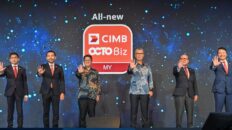Key Takeaways
- Strategy Before Tools AI adoption must begin with business strategy, not software selection. The first question is never “Which AI tool should I buy?” but “Which part of my business model am I reinventing?” This shifts the focus from chasing trends to creating measurable transformation.
- AI Is a Capability, Not a Gadget Most businesses view AI as a “smart assistant” for tasks like writing or automation. In reality, its true value lies in reimagining how data drives decision-making, customer experience, and business model innovation across the entire organisation.
- From Generative to Agentic AI The next wave of AI moves from reactive (Generative AI) to proactive (Agentic AI) systems that can act autonomously within set parameters. Businesses that design clear workflows and guardrails for agentic systems will gain a strategic edge.
- Data Is the New Differentiation Generic AI tools can’t deliver business-specific insight. The advantage comes from treating your data as an asset—training AI on your domain knowledge to create tailored, high-accuracy systems that unlock efficiency, monetisation, and scalability.
- Ethical, Phased, and Human-Led Implementation Sustainable AI transformation demands structure—ethical data governance, compliance, and a phased rollout. Leaders don’t need to code, but they must lead by understanding AI’s potential and empowering teams to build capabilities around it.

AI is not just the next shiny tool. It’s the most significant opportunity in decades to reinvent how businesses make money. That’s the message Chew brings to leaders. With decades of experience driving data-led transformation for brands such as Nestlé, Petron, and Malaysia Airlines, she now works with SMEs to adopt AI strategically; not as a gadget, but as a growth engine.
Her philosophy is simple. Strategy first, tools second.
AI Is Not Just a Smart Assistant
If you’re only using AI for tasks, you’re leaving 90% of its value untapped. To most small business owners, Artificial Intelligence (AI) remains an abstract and somewhat intimidating concept. Many equate it with ChatGPT, chatbots, or the latest time-saving productivity tools.
“Most people think of AI through their first encounter with it, like a chatbot or writing assistant,” Chew explained. “It’s reactive, accessible, and focused on automating simple tasks.” However, she added, this perception is shaped more by marketing and media than by reality. “AI is often seen as a smart assistant, when in truth, it’s a strategic and systemic capability. Its real power comes from data—and how you use that data.”
To her, that misunderstanding is one of the most significant barriers to meaningful adoption. In this conversation, Chew shares how AI can play a role as a long-term business enabler capable of transforming operations, decision-making, and growth.
Misconceptions That Hold Businesses Back
One of the most common misconceptions she encounters is the belief that AI is a plug-and-play tool. “Many business owners treat AI like a one-time software purchase. They might buy a chatbot but then say, ‘I can’t use this as a salesperson because I don’t trust it.’ And that’s because there’s no strategy. They didn’t train it. They didn’t map the process. There’s no workflow,” she shared.
This approach leads to fragmented implementation. Without a clear objective, companies end up with a patchwork of tools, underutilised subscriptions, and little to no return on investment.
So what’s missing?
The first question is never, ‘Which tool should I buy?’ It’s always, ‘Which part of my business model am I reinventing?’ Chew advised. That question, according to her, anchors the process not in technology, but in business outcomes.
AI-Driven Business Model Innovation

Chew emphasised that AI is a capability that touches every part of a business model.
AI can transform not just tasks, but entire business models. At 10xAI Business, Chew and her team guide leaders through dimensions of AI-powered business model innovation.
These include enhancing customer experience through deeper personalisation and anticipating needs. Creating new ways to monetise services or data for revenue streams while reducing costs and improving operations efficiency at scale. AI can also be used to unlock new ecosystems and collaborations, and indeed to build more intelligent, faster internal systems. “When leaders think in these dimensions, AI stops being a tool and becomes a growth engine,” Chew explained.
Take customer experience, for example. “You can use AI to enhance how you serve customers, personalise interactions, and even anticipate what a customer might need next,” she said. She points to how one of the world’s largest digital retailers collects user data that tracks what people browse, click, and purchase to build predictive models.
“They’re not guessing. They’re using data strategically,” she explained. “A customer browsing baby products may be expecting a child, so the system responds with offers, relevant content, and time-sensitive promotions. It’s not magic. It’s a strategy, powered by AI.”
From Generative to Agentic AI

Chew also helps businesses prepare for the next frontier; Agentic AI.
“Most people may have only interacted with Generative AI, where you give it a prompt and it responds,” she said. “It’s reactive. It waits for instructions.” Agentic AI, however, takes things further. It can make decisions and take action on your behalf based on predefined rules or objectives.
In an online customer journey, for instance, agentic AI could detect when a user clicks on a product and automatically trigger a targeted email, issue a discount code, or recommend complementary products without human intervention. “It’s like having a proactive assistant that doesn’t just understand what’s happening, it knows what to do next,” said Chew.
But like any system, agentic AI still needs structure. “You need first to map out your customer experience strategy and workflow. Then, you identify where AI adds value,” she said.
Turning Data Into Differentiation with AI
Generic Large Language Models (LLMs), such as ChatGPT, are great for broad tasks, but they often lack the nuance that industries need. The real advantage comes from treating your data as a strategic asset to build AI systems that actually understand your domain.
For example, Chew’s AI data science partner helped a leading global digital platform transform its massive user data into more intelligent audience segments for advertisers. By making sense of patterns across millions of user interactions, the company was able to deliver more relevant ads, which in turn boosted monetisation opportunities.
“As demonstrated by Supertype.ai’s Opera case study where the team crafted a custom audience segmentation model using a 256-dimensional embedding approach. This yielded 99.57% accuracy across 10 million data points,” said Chew. She explained that this enabled sharper lookalike audiences for advertisers and significantly improved ad monetisation.
Similarly, in mining logistics and public sentiment, Supertype’s AI solutions achieved cost reductions exceeding $2 million annually in logistics and reduced analyst workloads by 99.9% in sentiment analysis. “These are not generic tools, they are tailored, strategic systems that reshape business models,” Chew emphasised.
The Ethics of AI and A Phased, Strategic Implementation

Chew is quick to caution against neglecting the ethical and legal dimensions of AI. “When you use AI, you’re dealing with people’s data,” she said. “If you don’t manage it properly, you can run afoul of data protection laws.”
That’s why she works with clients to build secure, structured knowledge systems integrating both internal and external data sources in a way that delivers accurate insights, protects privacy, and meets compliance standards.
This focus on doing things right also informs how Chew approaches AI implementation. “You don’t need to do everything at once,” she said. “It’s about identifying the biggest ROI. Start small. Get a tangible win. Then build on it.”
Her team guides clients through a phased rollout mapped over months or even years, depending on their goals, digital maturity, and budget. The result is a gradual, confident adoption of AI as a trusted long-term asset.
Chew helps clients diagnose their needs, aligns AI with business strategy, and then recommends the most suitable tools. “We don’t push products. We build systems,” she said. A tool-agnostic approach is rare and valuable. “A vendor may push their own solution, whether it fits or not. We design the system first, then find the right tools to match.”
Are You Ready for AI?

So how can a business tell if it’s ready for AI?
“Ask yourself: Are you using AI strategically?” Chew quizzed. Signs of readiness include asking better questions such as, How can AI enhance productivity?, How can it drive revenue?, What’s our five-year roadmap?
“Businesses that ask these questions are ready for transformation.” But she emphasises that readiness starts at the top. “Leaders don’t need to code,” she said. “But they must understand what AI is and what it can do. If they don’t lead the transformation, no one else will.”
That leadership extends to building teams that understand AI, investing in ethical systems, and developing capabilities through people, process, and practice.
The Window Is Now
Chew sees this moment as a turning point comparable to the early days of e-commerce or social media. “In the 90s, businesses that adopted e-commerce early became market leaders. Now it’s the same with AI,” she said. “Early adopters get the advantage.”
And for those who wait?
“They’ll still have to catch up eventually,” she said. “But they’ll miss the competitive edge and the revenue along the way.”









